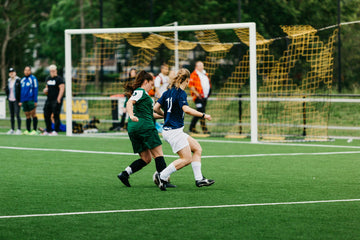How to Handle Eyebrow and Eyelash Allergies
Eyebrow and eyelash allergies can be frustrating and uncomfortable, but with the right knowledge and preparation, it is possible to manage and minimize the symptoms. In this article, we will discuss what causes these allergies, common symptoms, and effective ways to handle them, so you can continue to enjoy your beauty routine without any hassle.
Understanding the Causes
Allergic reactions around the eyebrows and eyelashes are typically caused by an allergen coming into contact with the skin or eyes. Some common allergens include:
-
Cosmetics: Certain ingredients in eyebrow and eyelash products, such as makeup, adhesives, or even certain types of brow or lash serums, can trigger an allergic reaction.
-
Sensitization: Prolonged use of certain beauty tools like eyelash curlers or lash applicators can lead to sensitization and eventually trigger an allergic response.
-
Environmental Factors: Pollen, dust mites, pet dander, and other environmental allergens can also cause itching, redness, and swelling around the eyebrows and eyelashes.
Identifying the Symptoms
Eyebrow and eyelash allergies can manifest in various ways, including:
- Itching: Constant itching and discomfort in and around the eyebrows and eyelashes.
- Redness and Irritation: The affected area may appear red, swollen, and inflamed.
- Burning Sensation: A burning or stinging sensation in the eyes or on the skin.
- Watery Eyes: Excessive tearing or watery eyes can accompany allergic reactions.
- Scaling or Flaking: Allergies can cause dryness, scaling, or flaking of the skin around the affected area.
If you experience any of these symptoms, it is essential to consult with a dermatologist or allergist to get a proper diagnosis and receive appropriate treatment.
Handling Eyebrow and Eyelash Allergies
Managing eyebrow and eyelash allergies requires a combination of prevention and treatment methods. Here are some effective ways to handle them:
1. Avoid Allergens
The first step in managing allergies is to identify the allergen and avoid it. If you suspect a particular cosmetic product or beauty tool is causing the reaction, discontinue its use immediately. Read product labels for potential allergens and choose hypoallergenic or fragrance-free alternatives.
2. Maintain Good Hygiene
Maintaining good hygiene is crucial to prevent further irritation and allergies. Cleanse your eyebrows and eyelashes gently with a mild cleanser or baby shampoo to remove any residual makeup, dirt, or allergens. Avoid rubbing or scratching the affected area, as it will only worsen the symptoms.
3. Use Protective Products
Consider using hypoallergenic and non-comedogenic products specifically formulated for sensitive skin and eyes. Look for cosmetics labeled as safe for sensitive skin or ophthalmologist-tested to ensure they are less likely to cause an allergic reaction.
4. Consult a Professional
If your symptoms persist or worsen, seek guidance from a dermatologist or allergist. They can conduct patch testing to identify specific allergens and recommend appropriate treatments, such as corticosteroid creams, antihistamines, or immunotherapy.
5. Opt for Natural Remedies
Some natural remedies may help alleviate allergy symptoms. Applying a cold compress can reduce inflammation and soothe irritated skin. Additionally, incorporating anti-inflammatory foods like leafy greens, turmeric, and ginger into your diet may provide relief from allergies.
While these tips can help manage symptoms, it is crucial to address the root cause of the allergy and follow professional advice for long-term relief.
Conclusion
Dealing with eyebrow and eyelash allergies can be challenging, but with proper care and management, you can minimize discomfort and continue to enjoy your beauty routine. Identifying and avoiding allergens, maintaining good hygiene, using protective products, seeking professional guidance, and incorporating natural remedies can all contribute to alleviating symptoms. Remember to consult a dermatologist or allergist for a comprehensive evaluation and personalized treatment plan.






